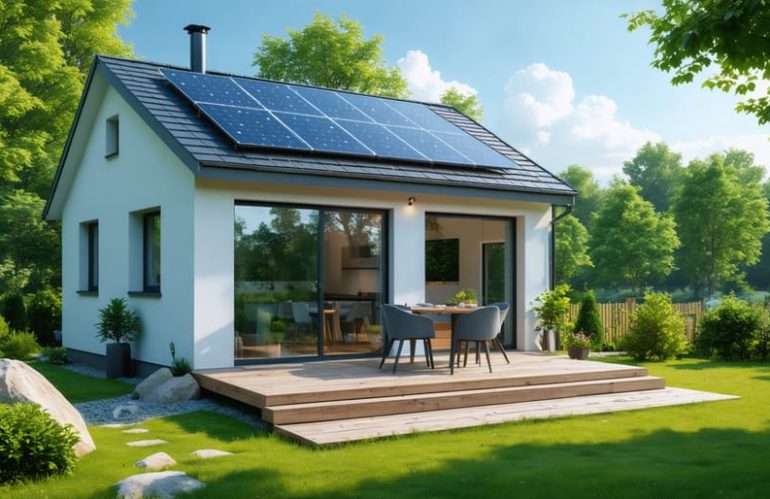

1. Introduction
2. Why Choose Solar for Small Homes
3. Types of Solar Systems for Tiny Homes
4. Understanding Power Consumption in a Tiny House
5. Cost of Solar Panels for Tiny Home
6. Off-Grid Solar Equipment Options
7. Incentives and Rebates in Australia
8. Conclusion

Solar energy has become one of the most reliable ways to reduce electricity bills and make homes more environmentally friendly. For small homes and tiny houses, solar panels can be a smart investment because they provide just enough energy for your home without requiring a huge setup.
Whether you are planning solar panels for tiny home setup or a tiny house off-grid solar system, understanding your options, costs and energy needs is important before making a decision.
Small homes and tiny houses are perfect for solar setups because their energy requirements are usually lower and making the investment more affordable.
Installing solar panels for small homes offers several advantages, some of them are given below:
Save on electricity bills : By generating your own electricity, you have to pay less to the grid.
Energy independence : A solar system reduces your reliance on the main power supply.
Environmentally friendly : Solar energy reduces your carbon footprint and helps combat climate change.
Backup power : With batteries, your home can have power during outages or emergencies.
Choosing the right system depends on your location, energy needs and whether you want to be connected to the grid. Here are some main types of solar systems for tiny home:
Grid-Tied Solar System
Off-Grid Solar System
Hybrid Solar System
Knowing your power consumption tiny house is necessary before installing solar panels. For example, a tiny home with a fridge, a few lights and a laptop may consume around 5–7 kWh per day. So knowing your consumption can help you to select the right solar panels for tiny home cost and system size.
Here’s how to estimate it:
List daily appliances : Include fridge, lights, fans, water pump, laptop, etc.
Check energy ratings : Most appliances have energy consumption in kWh.
Calculate total usage : Add up daily and monthly usage to know how much energy your solar system should produce.
Choosing a high-quality system ensures better efficiency, longer lifespan and more savings over time. The solar panels for tiny home cost can vary depending on system size, brand and installation. Average estimate is given below:
Small homes typically need 2–5 kW systems.
Average installation cost ranges from AUD 3,000 to 8,000 which depends on quality and components.
Adding battery storage increases the cost but provides energy backup and independence.
This setup ensures your home has power even in remote locations without relying on the electricity grid. Many tiny house owners combine solar panels for tiny home with portable batteries for mobility.
For a completely independent system, your tiny house off-grid solar system will include following equipments:
Solar panels
Battery storage
Charge controller
Inverter
Australia encourages renewable energy adoption through several programs. These programs make installing solar panels for small homes more affordable and help reduce the payback period. Some of the incentives & rebates are given below:
Small-scale Renewable Energy Scheme (SRES) : Reduces installation costs using STCs.
State-based rebates : Some states offer additional incentives for residential solar.
Feed-in Tariffs (FiTs) : Earn credits by exporting excess energy to the grid.
Installing solar panels for tiny home or small homes in Australia is an affordable way to save on electricity bills and promote a sustainable lifestyle. By understanding your power consumption tiny house, system costs and whether you need off-grid equipment, you can choose the right solution.
A well-planned solar system gives energy independence, cost savings and peace of mind. Start planning your tiny home solar setup today and enjoy the benefits of clean, renewable energy.